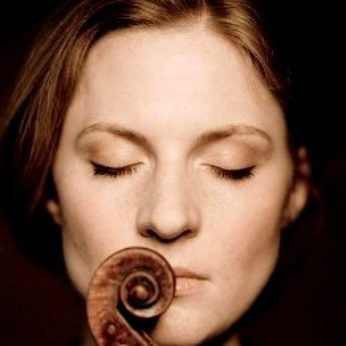Composer: Krzysztof Penderecki (b. 1933 - d. 2020)
Performance date: 06/07/2012
Venue: St. Brendan’s Church
Composition Year: 2000
Duration: 00:32:09
Recording Engineer: Anton Timoney, RTÉ lyric fm
Instrumentation Category:Sextet
Instrumentation Other: vn, va, vc, cl, hn, pf
Commission: commissioned by the Musikverein
Artists:
Ewa Kupiec -
[piano]
Hervé Joulain -
[horn]
Christoffer Sundqvist -
[clarinet]
Andreas Brantelid -
[cello]
Lawrence Power -
[viola]
Tanja Becker-Bender -
[violin]

This magnificent Sextet was commissioned by the Musikverein in
Vienna where it was premiered in June 2000. There was an impressive cast list –
Dmitri Alexeyev, Julian Rachlin, Yuri Bashmet, Mstislav Rostropovich, Paul
Meyer and Radovan Vlatkovic – a measure of the work’s importance and its
virtuosity. It is his most substantial chamber work to date and has all the
makings of a modern masterpiece.
The furious opening
cannot but remind us of Shostakovich battling his way into one of his famous hard-driven scherzos as the
piano sets up an almost metronomic rhythm from the first bar. This builds
irresistibly until interrupted by a wild, piercing cry from the clarinet, later
taken up by strings, horn and even the piano itself. Through a combination of
dotted chords, repeated notes and abrupt statements of melodic elements we get
an impression of fleeting, imaginary dances sparking off the insistent rhythmic
tread. The dance is momentarily punctuated for an appearance of the intensely
lyrical phrase that will act as the main theme in the much longer second
movement. After this the music builds in a series of waves of stunning
compositional and instrumental virtuosity, sweeping us away until we reach the
forceful and decisive conclusion.
The Larghetto opens with strings and piano
emphasizing in all its fullness the elegiac nature of the theme we heard hinted
at in the first movement. The music settles into a mood of thoughtful
melancholy, while dramatic intensity is maintained by several brief and jagged
climaxes and the extraordinary originality and inventiveness of the
multiplicity of instrumental combinations. The theme is looked at in every
possible way, perhaps most expressively in an impassioned adagio by the cello
leading to a moving molto
tranquillo song by the
clarinet. These wonderful pages of the score transform themselves slowly into a
sombre and increasingly dematerialised coda haunted by almost imperceptible
nostalgic echoes of the movement’s leitmotiv.
Copyright © 2024 West Cork Music. All rights reserved.
Designed and developed by Matrix Internet